

TOP

RNAi is an intracellular post-transcriptional gene regulatory mechanism that was discovered in 1998 by Andrew Fire, Craig Mello and others in the Cryptomeria japonica nematode. It was shown that double-stranded RNA can trigger RNAi to catalyze the degradation of complementary mRNA transcripts in Cryptobacterium hidradii nematodes.Andrew Fire, Craig Mello won the Nobel Prize for this in 2006. After 20 years of technology development, the first siRNA drug was approved for marketing and clinical translation in 2018.
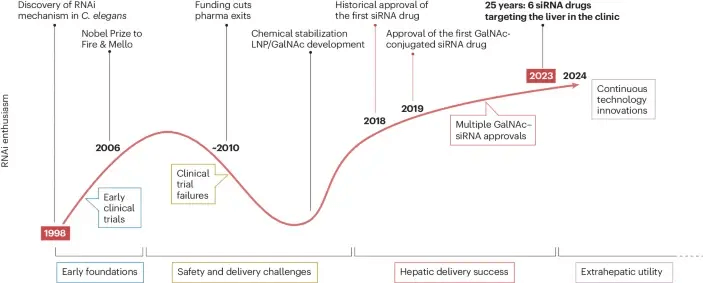
• Research status
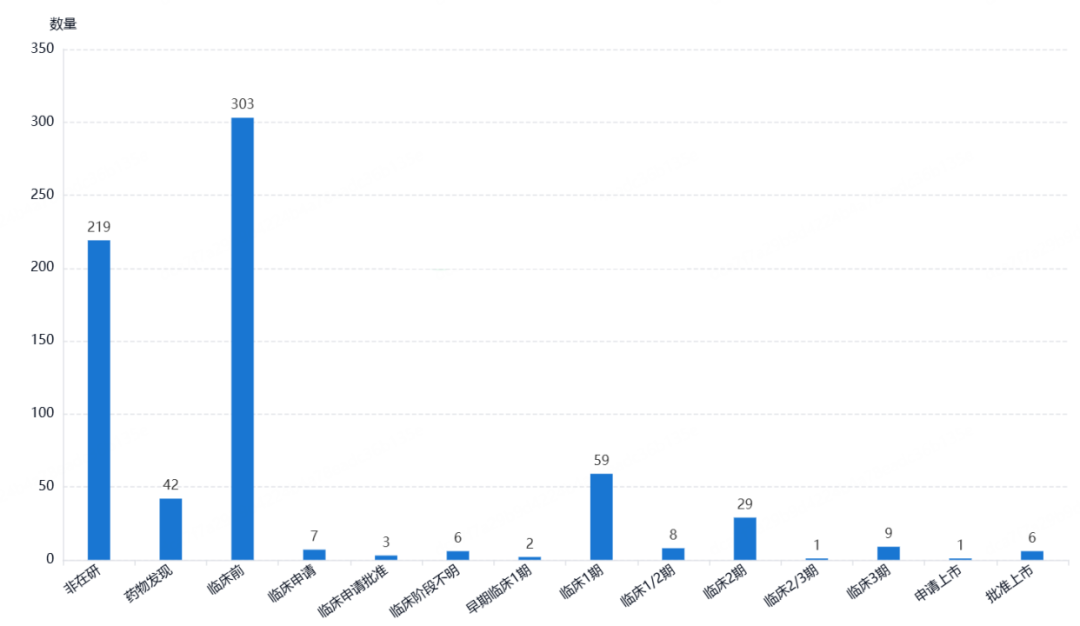
Global Distribution of siRNA Drugs by Highest R&D Status
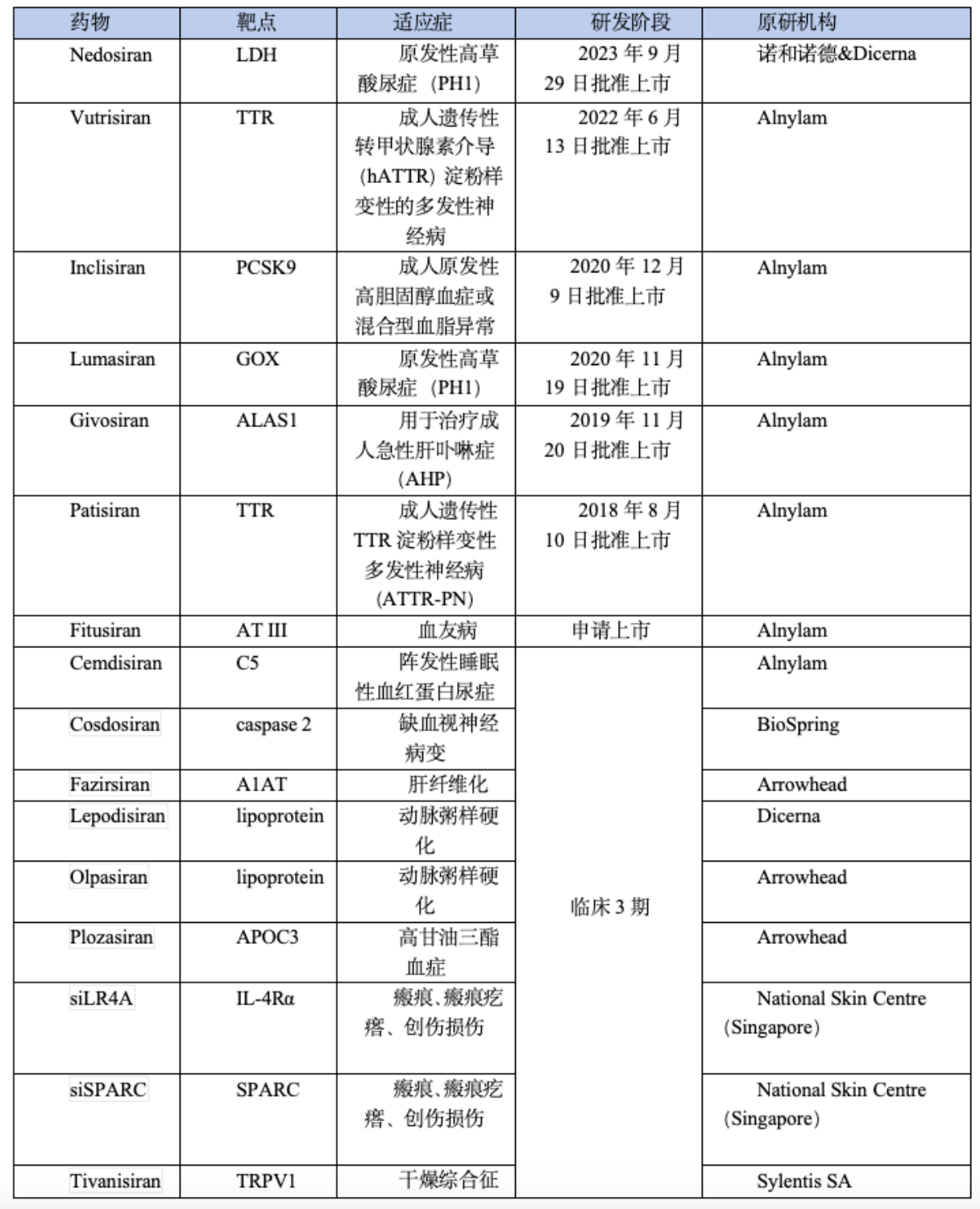
siRNA drugs in clinical phase 3, application for marketing, approval for marketing stage
Currently, there are more than 200 companies in the world developing siRNA drugs, and the representative foreign companies are Alnylam, arrowhead, Silence Therapeutics, etc., and the representative domestic companies are Shengnuo, Hublot Hope, etc.
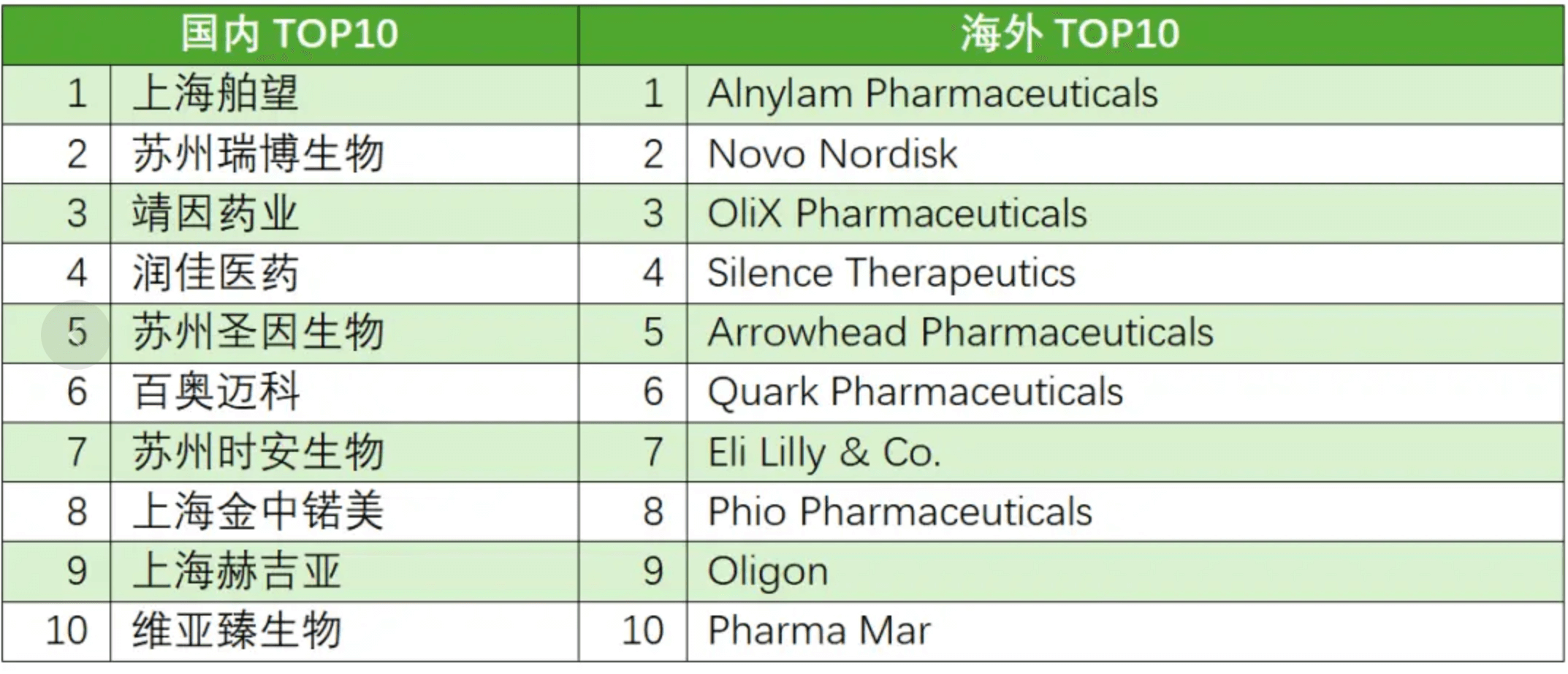
• Rationale
siRNA (small interfering RNA): refers to a class of double-stranded RNA molecules about 21-23 nt long (from the literature, 19-25 nt are possible), usually with two free bases at the 3' end, to silence the target gene through the RNA interference pathway.

At the present stage, siRNA drugs are exogenous siRNAs, which are internalized into specific tissue cells through delivery technology (e.g., GalNAC). After completing endosomal escape, they form RISC complexes with proteins such as AGO2, TRBP2, and DICER1 to remove the positive-sense strand, and the antisense strand recognizes the target mRNA, which is followed by RISC cleavage of the complementary mRNA to achieve gene silencing.
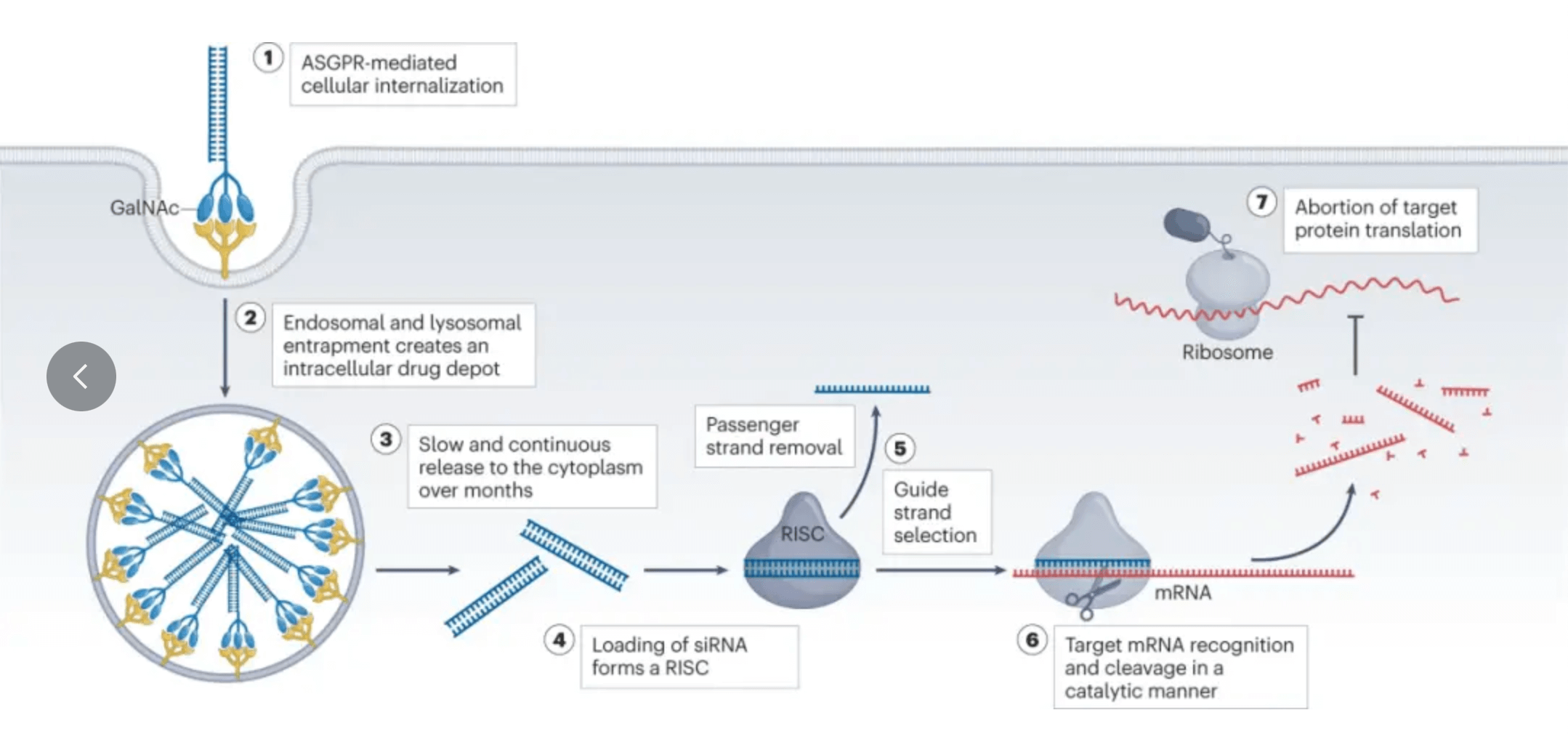
After the siRNA is introduced into the cell, it binds to the RNA-induced silencing complex (RISC), and one of the strands is retained in the RISC, which recognizes and binds to the target mRNA through base complementary pairing, and then the nuclease in the RISC cuts the target mRNA at a specific location to degrade it, thus realizing gene silencing.
• Years of experience in oligonucleotide synthesis to empower siRNA research
1.Synthesis of siRNA:Supports siRNA synthesis of various libraries and customized siRNA synthesis, all kinds of modified siRNA and ASO synthesis, accurate molecular weight, purity up to 98%, stable batch-to-batch consistency, fast delivery up to 5 days .
2. Detection of siRNA:More precise isolation and detection of designed and synthesized siRNAs, stable modification, strict control of exogenous contamination, and accurate characterization and quantification.
3. Screening of siRNA:Screening for siRNAs that can effectively inhibit target genes in specific cell lines according to customer requirements, high-throughput screening, support for mRNA and protein levels of multiple detection programs.
